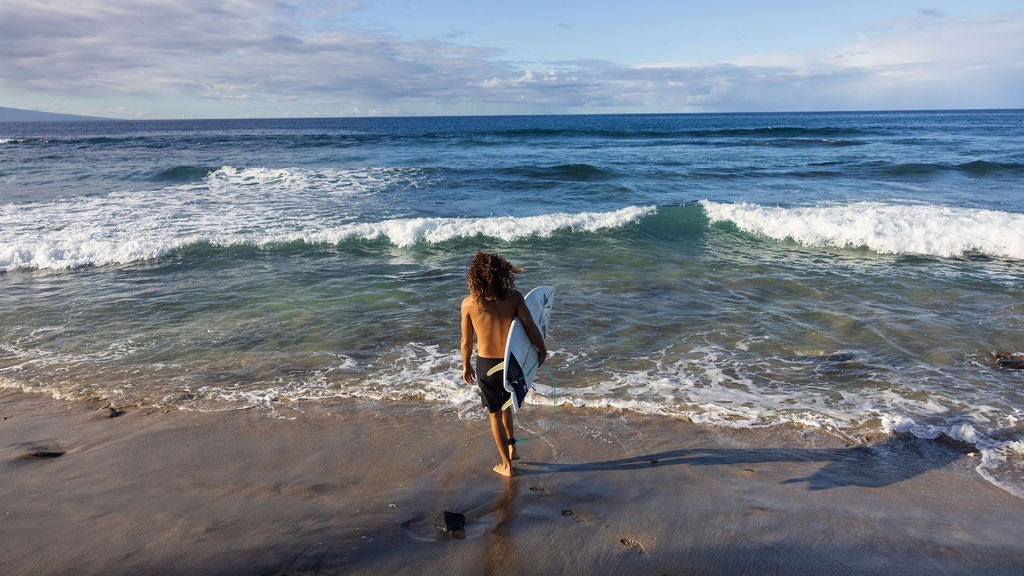No products in the cart.
Outdoor Adventure
The World Needs More Scientist-Surfers
Examining kelp along the Hawaiian coastline as a child with his family, Cliff Kapono thought of science and the surf as one in the same. Crawling onto his surfboard and floating in the salty ocean represented leisure and athleticism as much as it symbolized the earth’s elements like the wind, tide, rock, sand, seaweed, and water.
Once he entered middle school, though, he was forced by conventional academia to compartmentalize the two. It was either one or the other if he ever wanted to pursue them professionally, a mindset he says he struggled with through school.
“I would never mix the two, but tried my best to live both those lives separately,” says Kapono, a professional surfer, scientist, and journalist from Hilo, Hawaii. “I would put away my surf shorts or my wetsuit, and then I’d grab my lab coat.”
In the final years of his graduate study at the University of California, San Diego, Kapono was granted an opportunity by the school’s Global Health Institute to combine his two passions into one purpose-driven project. Using surfing as the vehicle, he studied the ways nature imprints molecular signatures on humans, just like humans leave behind fingerprints and footprints on the earth. That’s when Kapono decided for himself that he didn’t have to separate the two, nor did he feel compelled to label either of them as work even if he’s getting paid.
“By not having to split my brain all the time, I started surfing better than I’ve ever surfed and I started articulating scientifically on levels I never thought I could.”
Having studied coral reefs across the world and produced films about protecting the planet, he combines all his pursuits into one intentional, unconventional lifestyle. When he’s studying the coral reef, he uses his surfboard as his mode of transportation. And when he’s surfing, he’s connecting his body to the earth’s pulse. Every task has a purpose, one inspired by his motivation to improve human’s relationship to the natural world as his native Hawaiian ancestors taught him.
You can function on a high level as an enthusiast and as an academic
His current projects include working with Hydro Flask to create the Colors of Kona collection, a new line of bottles, tumblers, and more inspired by the vibrant and varied ecosystems found on the Big Island, Kapono’s home. And he lives by the brand’s Refill for Good campaign, which encourages the reduction of single-use plastics in an effort to protect those environments. Refilling a water bottle both preserves the planet and hydrates the body, he says, but it’s also a way of refilling the spirit for good.
“Once you start taking care of yourself, you can start taking care of others in your community,” he says. “To me, nature is the fastest way to charge to a full battery level to help other people.”
He’s also committed to the Honoli’i project, researching some of the world’s most resilient coral species in one of the island’s best surf spots. From his discoveries, he’s learning how land runoff affects the ocean. And through a partnership with the Road to Sea Foundation, he’s providing remote coastal communities with new technology for studying ocean health.
These days, he says, society is shifting to be more accepting of the blending of interests, unlike when he was a kid. People no longer need to define themselves solely by their profession, but instead can pave their own path through a culmination of their interests, hobbies, jobs, and passions.
“You can function on a high level as an enthusiast and as an academic,” he says. “That’s what I’ve been pushing.”
Since 2009, Hydro Flask has designed gear that happily goes where you do and stays the perfect temp til the outdoor adventure is over. Today is wide open. And we’re up for anything. #HeyLetsGo
Source link

